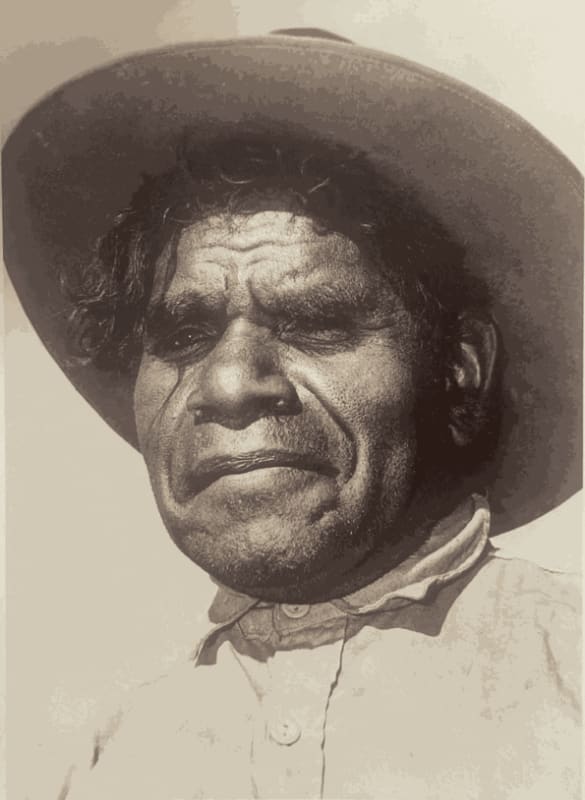Johnny Warangkula Tjupurrula was a renowned Pintupi artist from Mintjilpirri, near Lake Mackay. He spoke the Western Desert language and only encountered white civilisation in 1930. Later, he moved with his family to Hermannsburg, working in construction. In 1960, he was chosen to represent Australian First Nations people during Queen Elizabeth II’s visit.
A key figure in the early Australian First Nations Art movement, Johnny helped paint the famous Honey Ant murals in Papunya in 1971. This marked the beginning of his painting career, during which he developed a distinctive style characterized by intricate dotting techniques, like ‘over-dotting’, and symbolic storytelling based on Indigenous Dreamings.
His works, deeply rooted in traditional culture, emphasized the sacredness of the stories they depicted and avoided European influences. Johnny’s paintings often portray Water Dreaming, as well as Yam, Fire, Dingo, Wallaby, and Egret Dreamings, capturing the fleeting beauty of water and its transformative effect on the desert landscape. Celebrated for its integrity, his art remains central to the legacy of Papunya.
In 1997, with support from artist Michael Hollow, Johnny revived his work, producing a final series of vibrant, dynamic paintings, despite failing eyesight and health. Today, his works are held in major Australian museums and prized by international collectors.
Johnny Warangkula Tjupurrula passed away in 2001.

